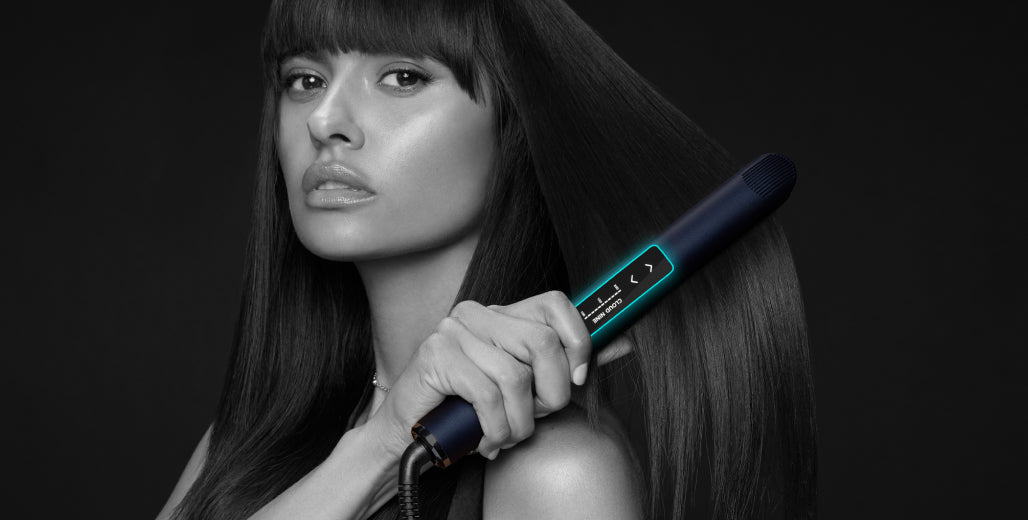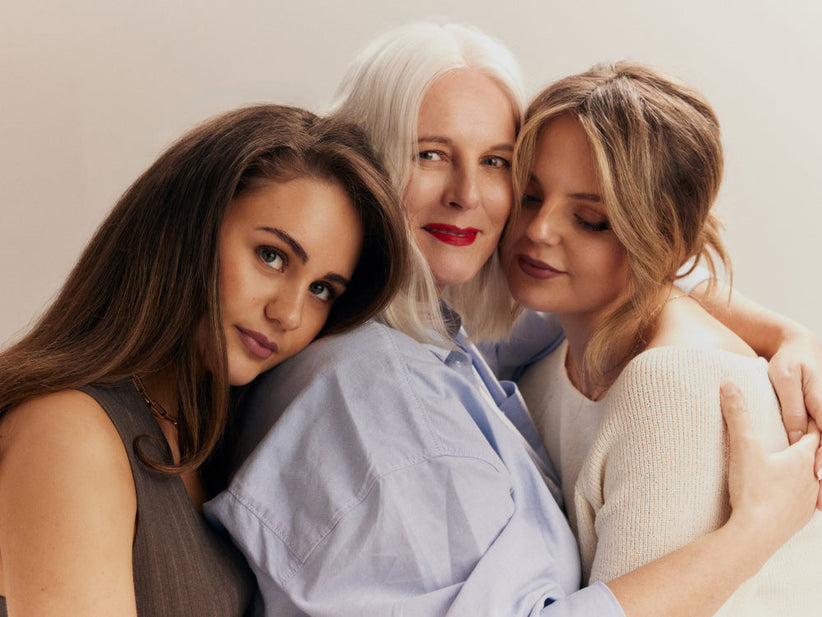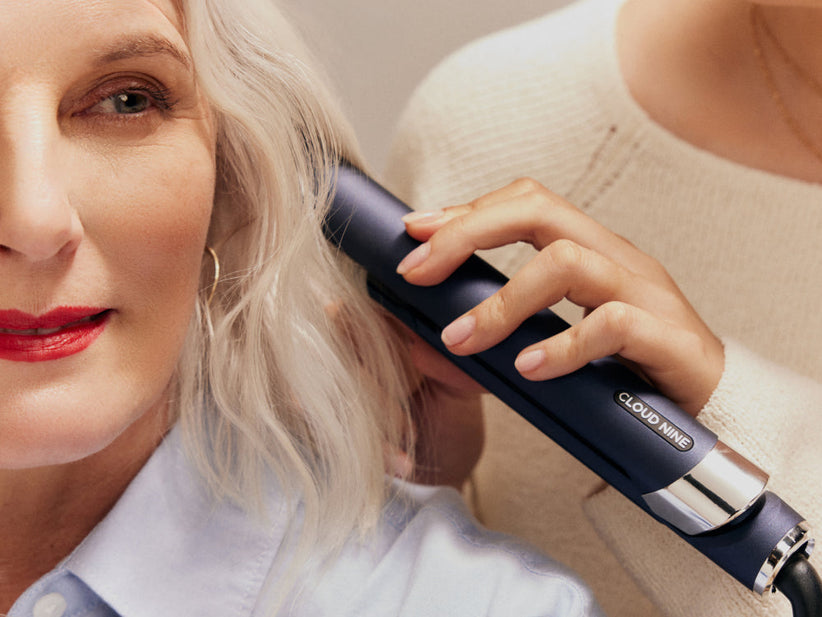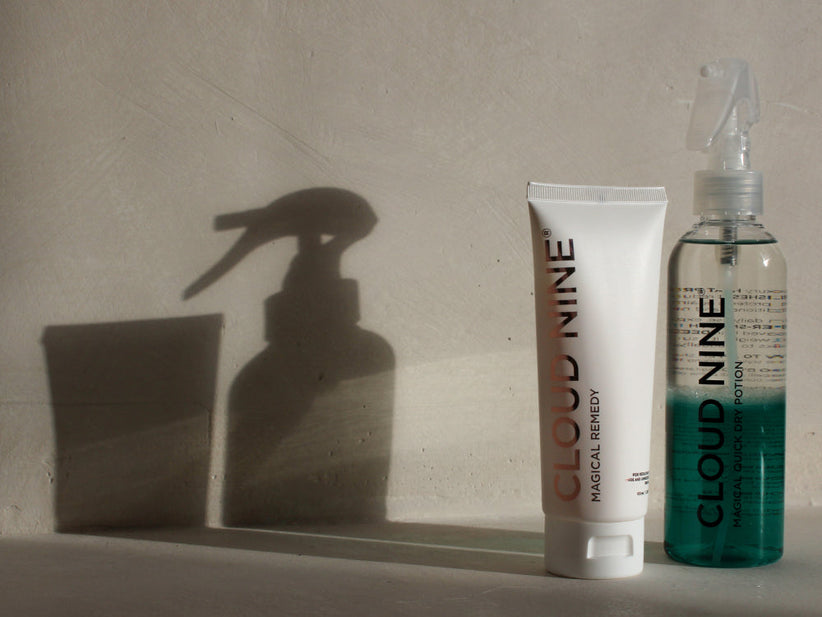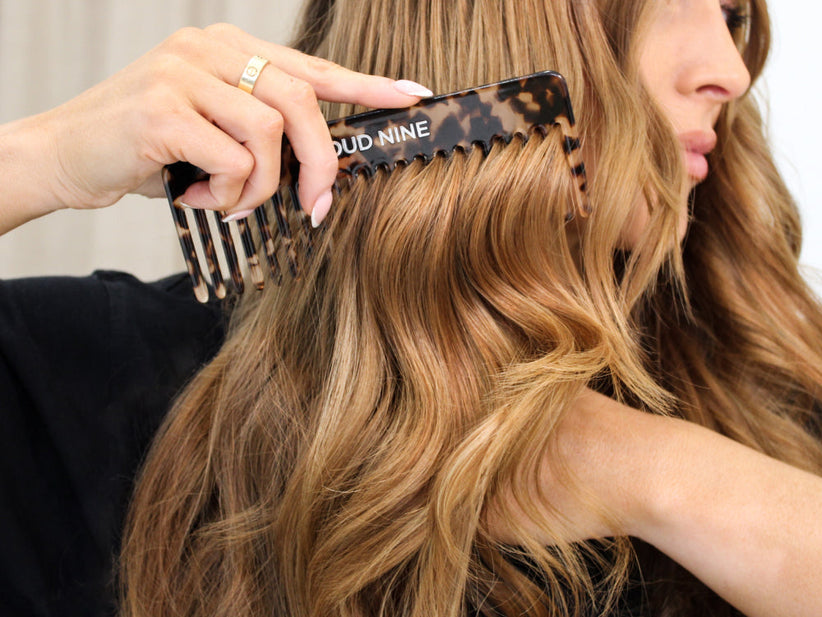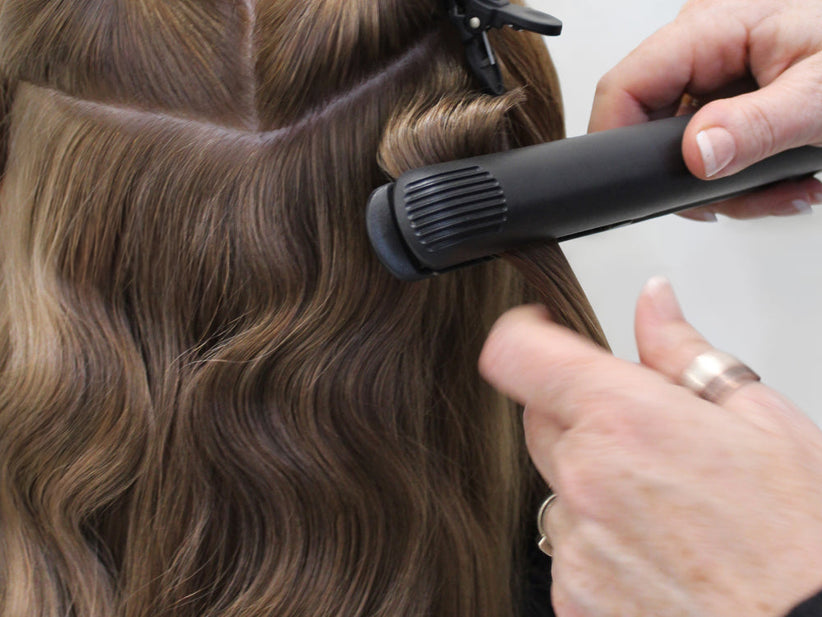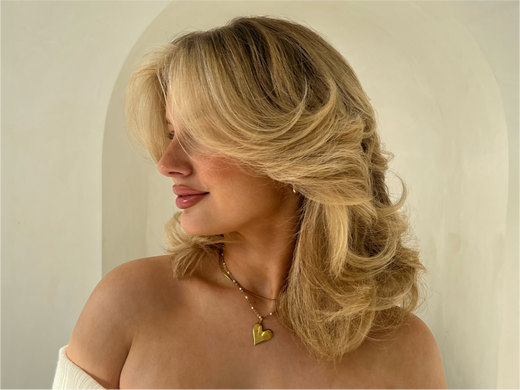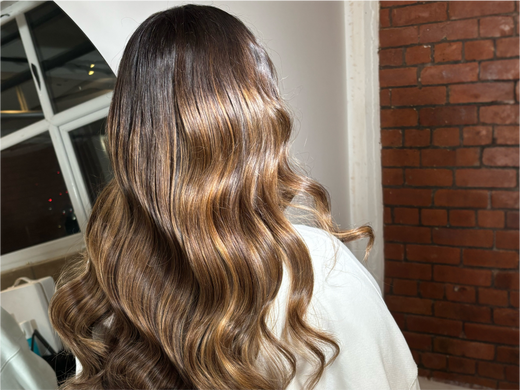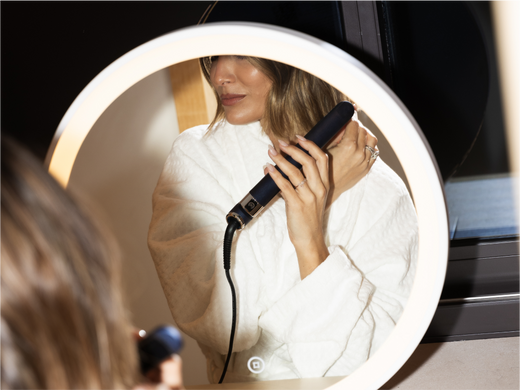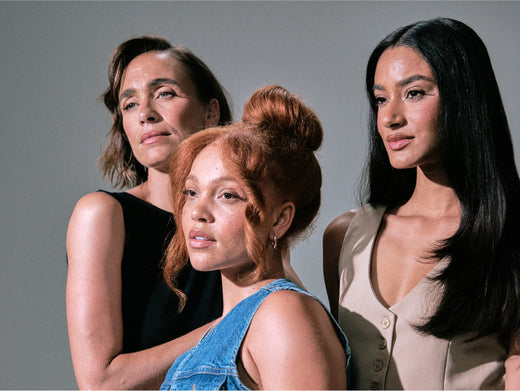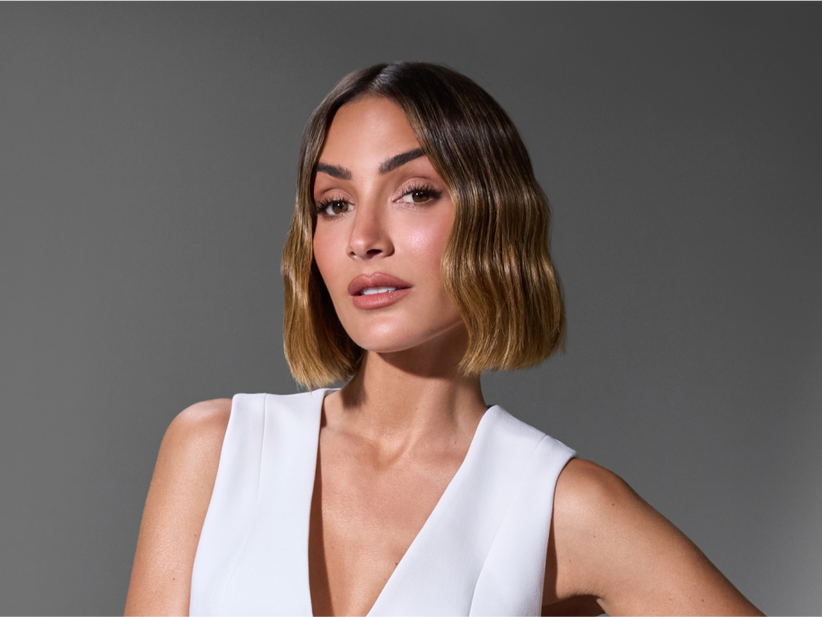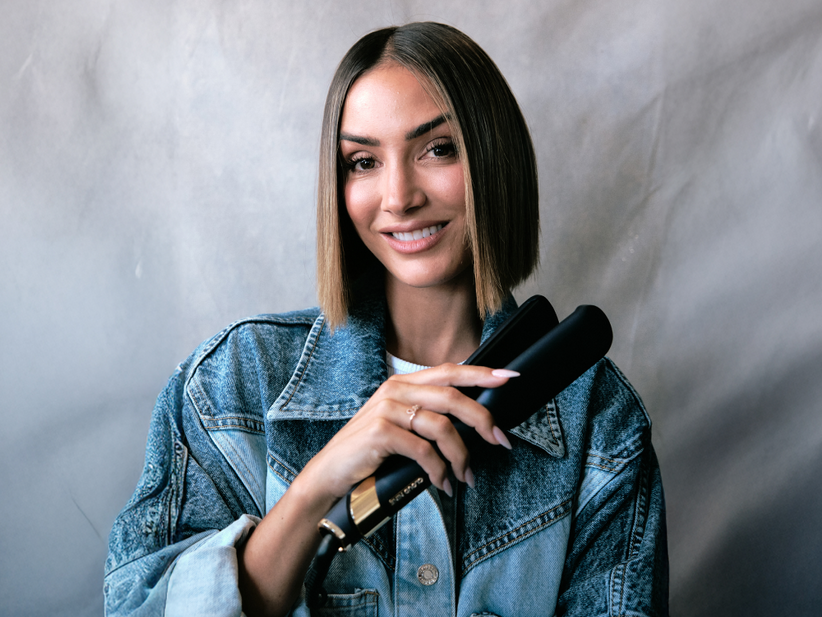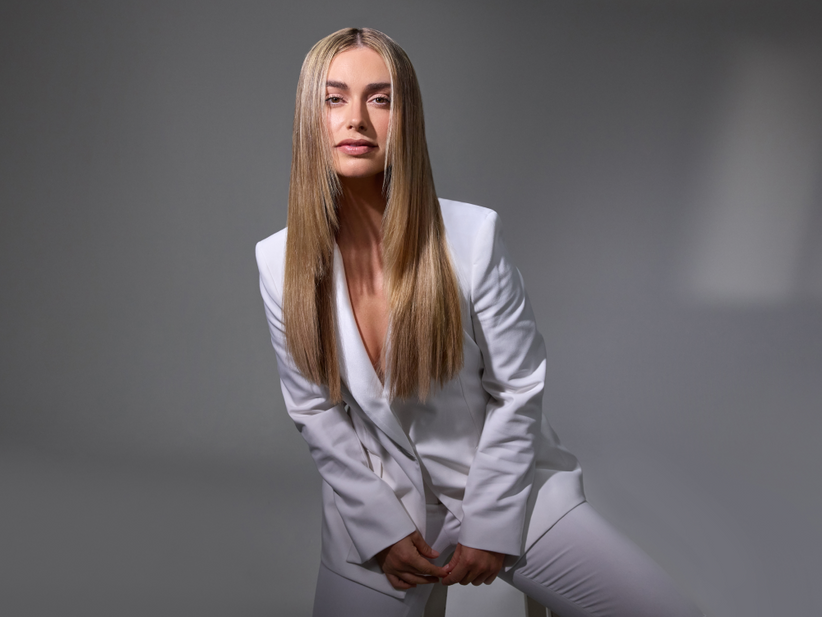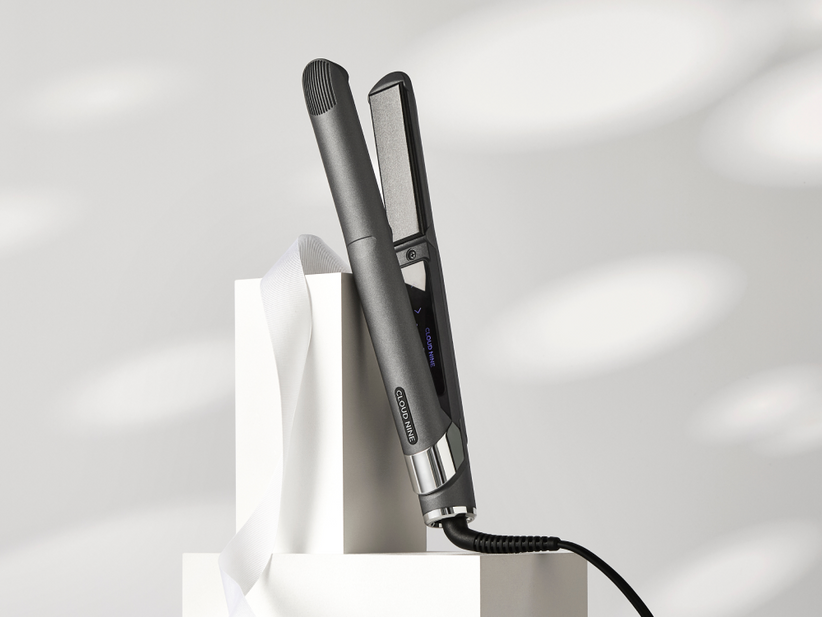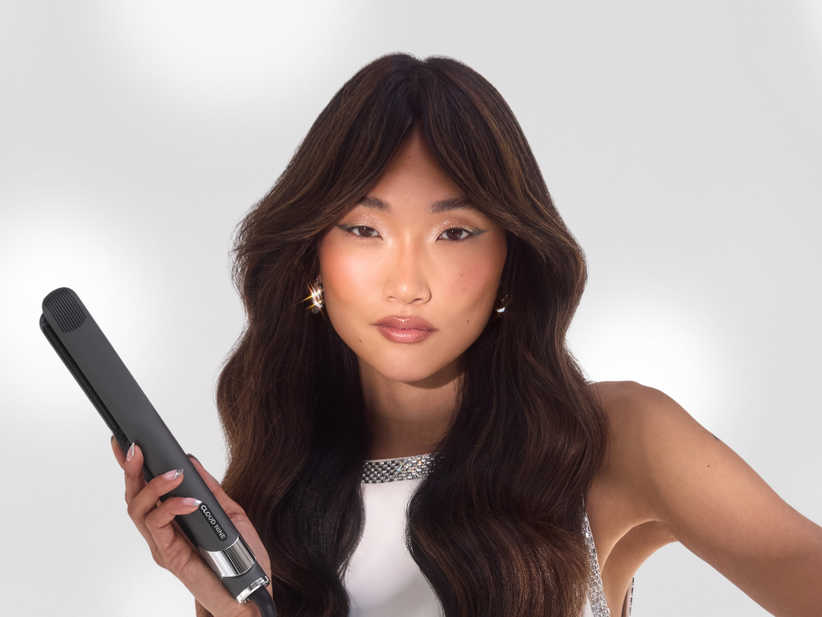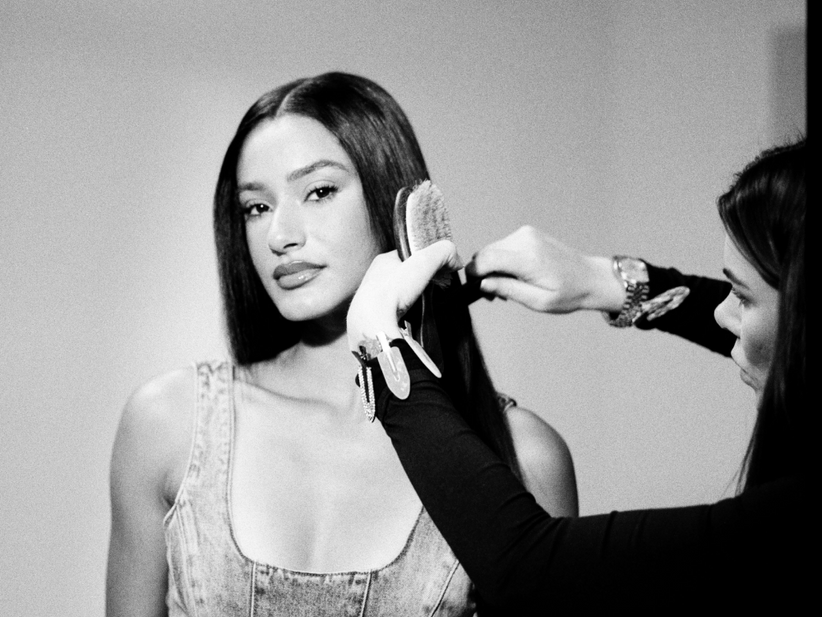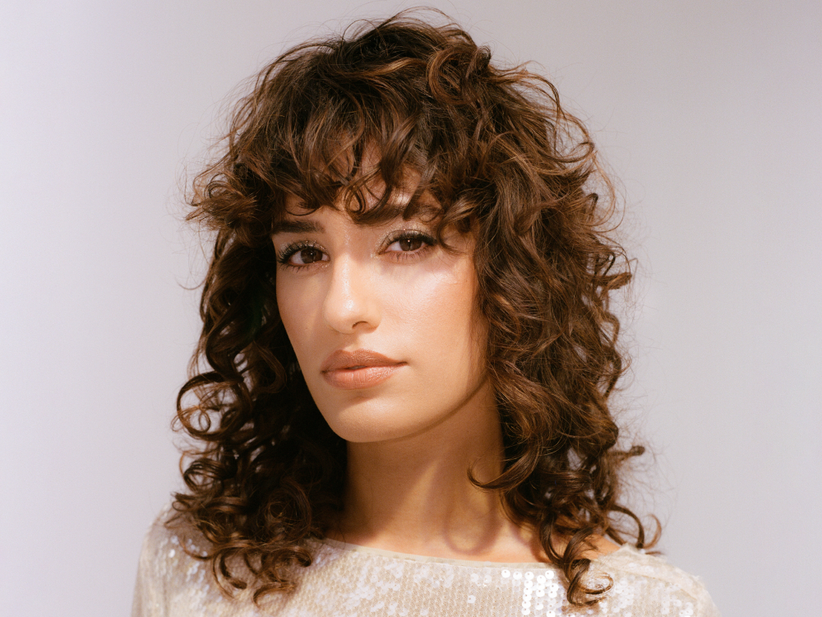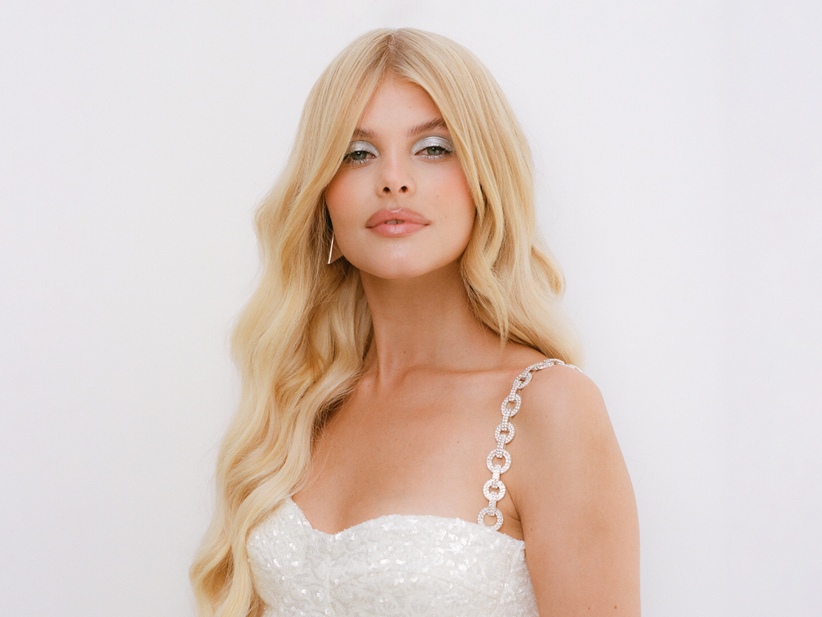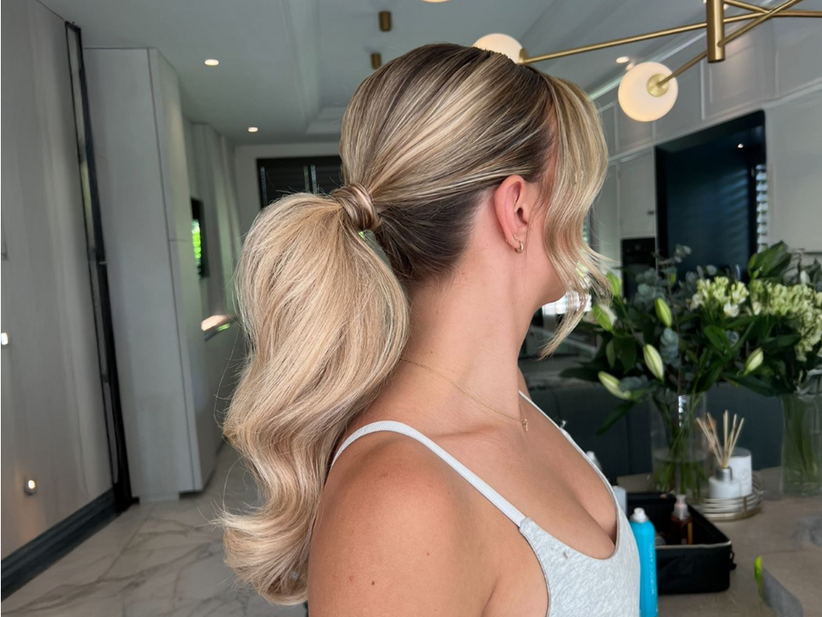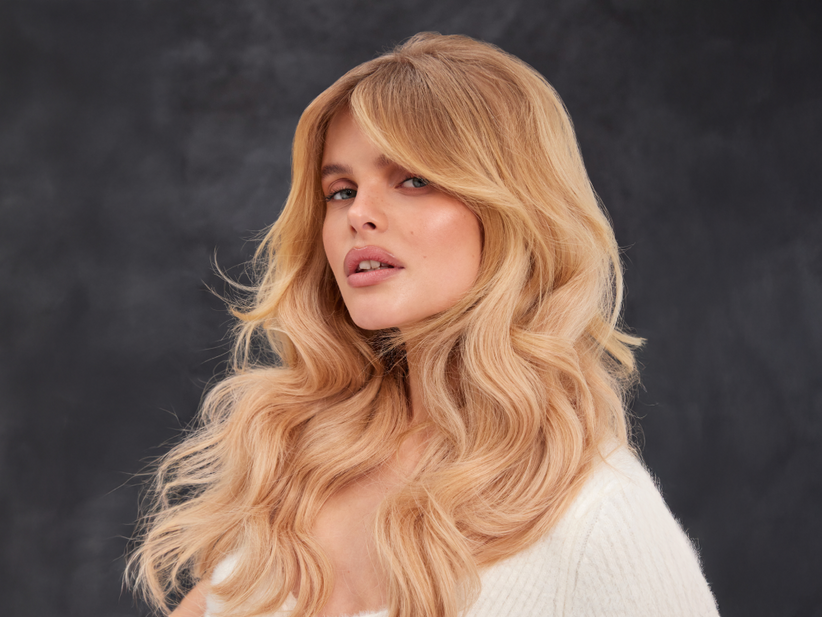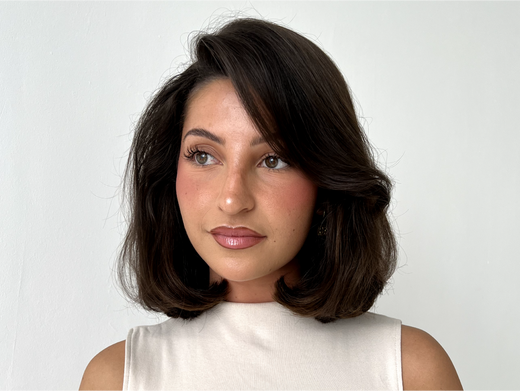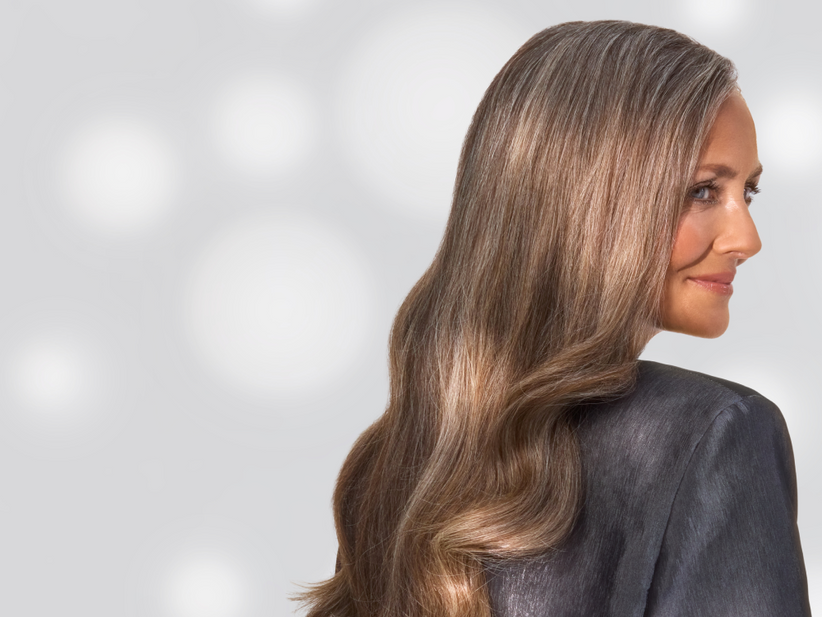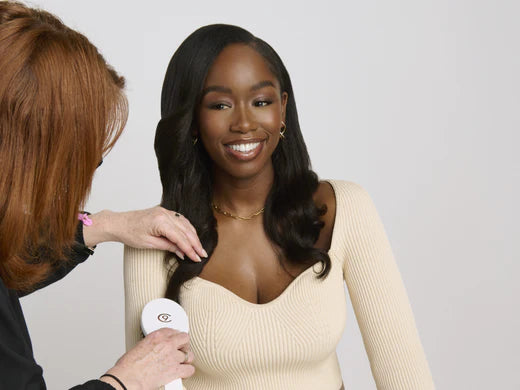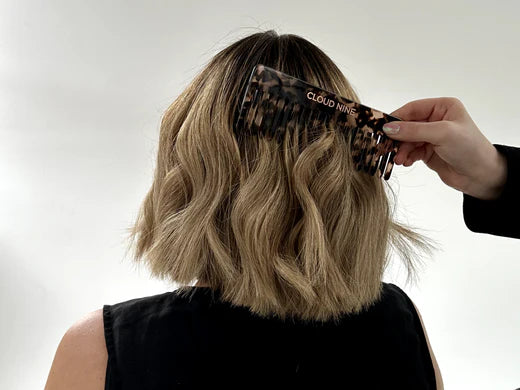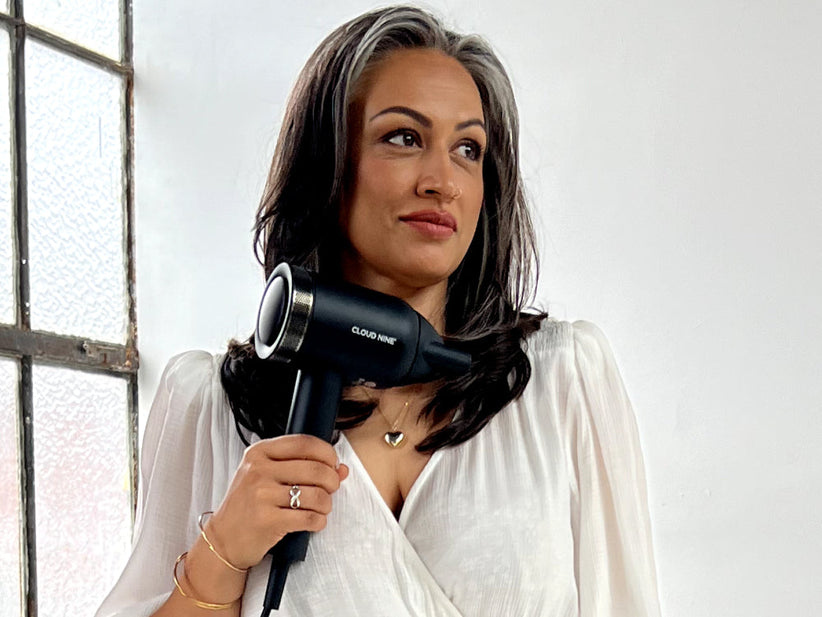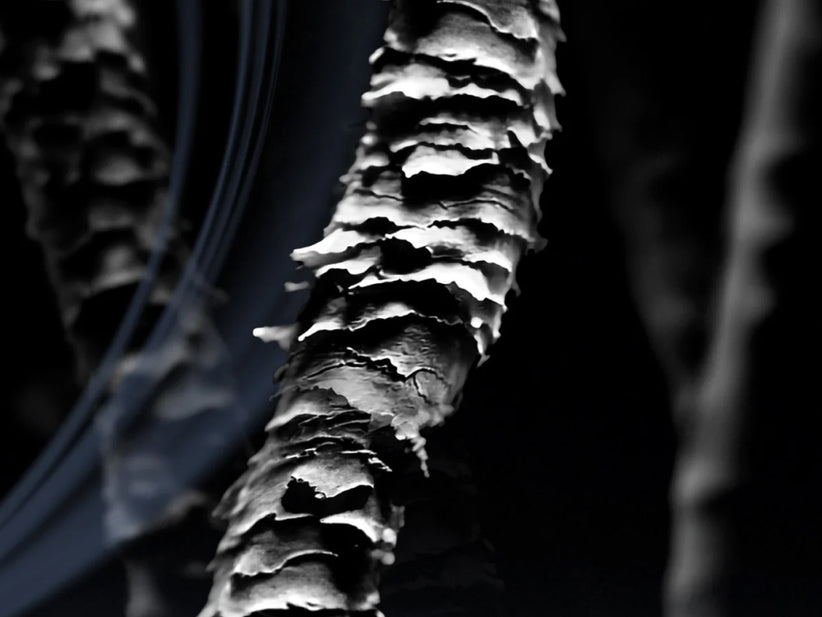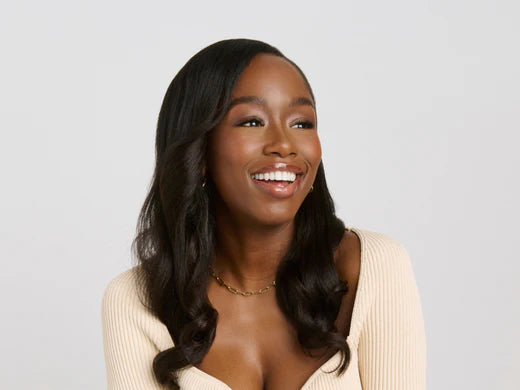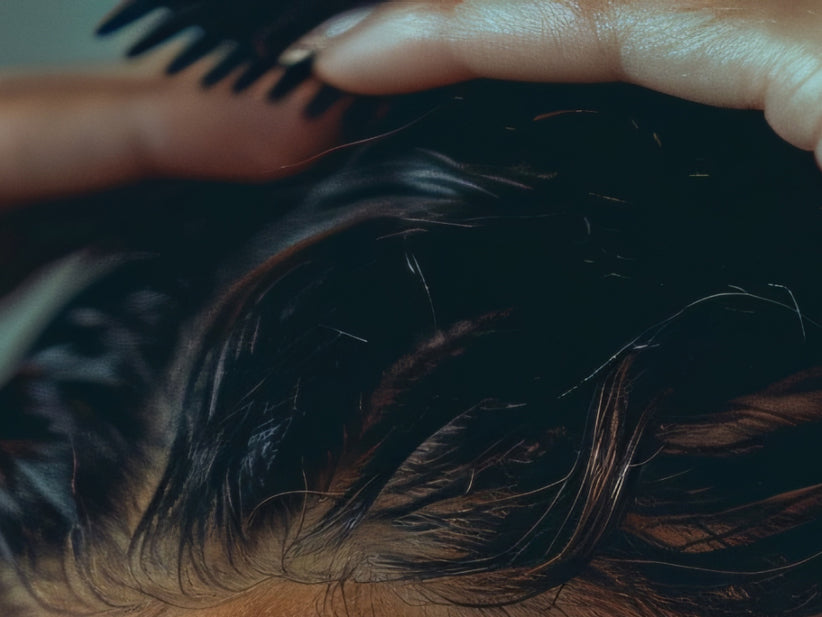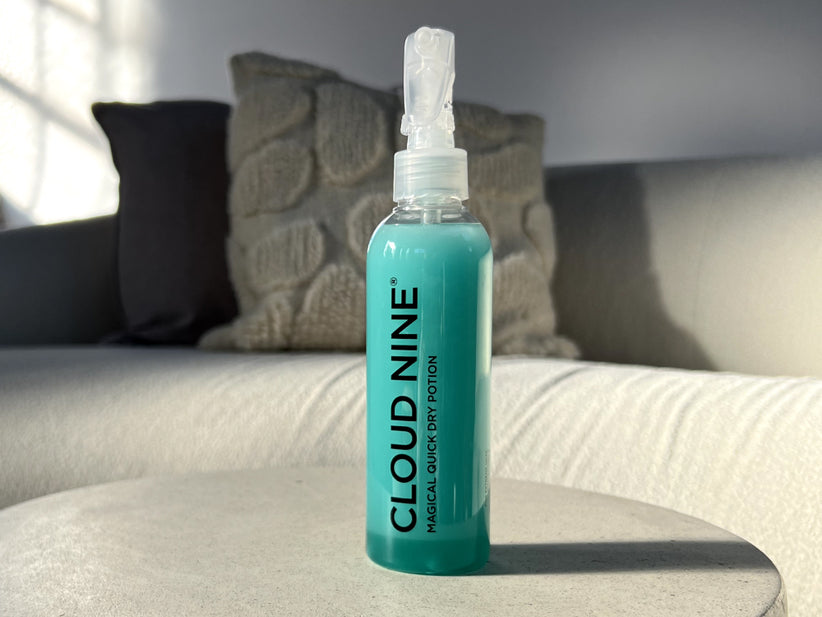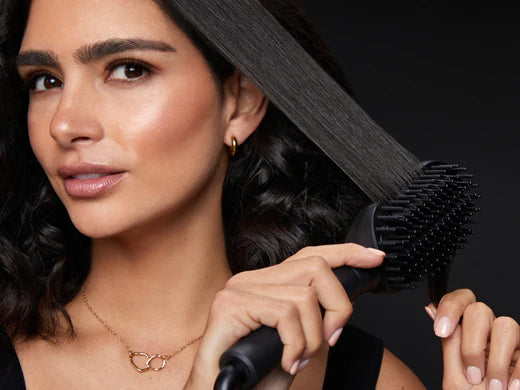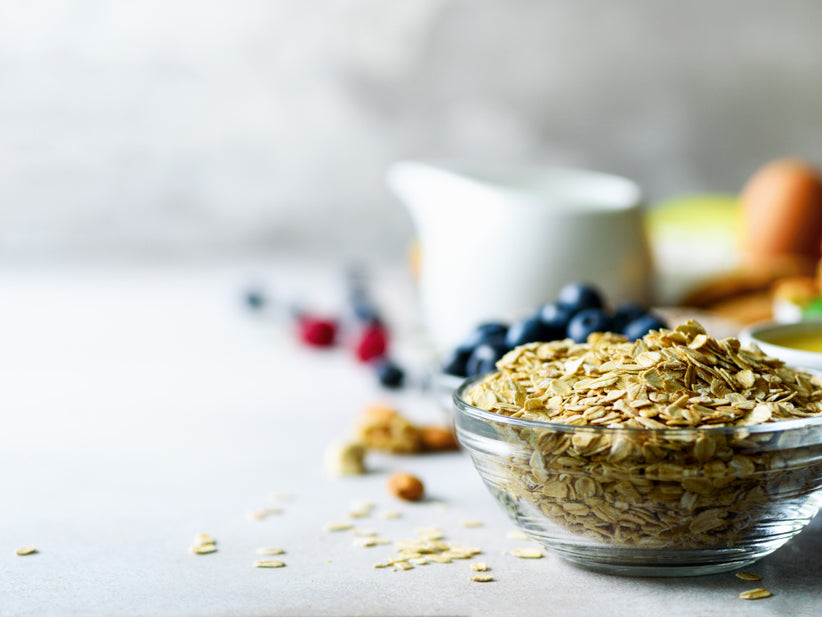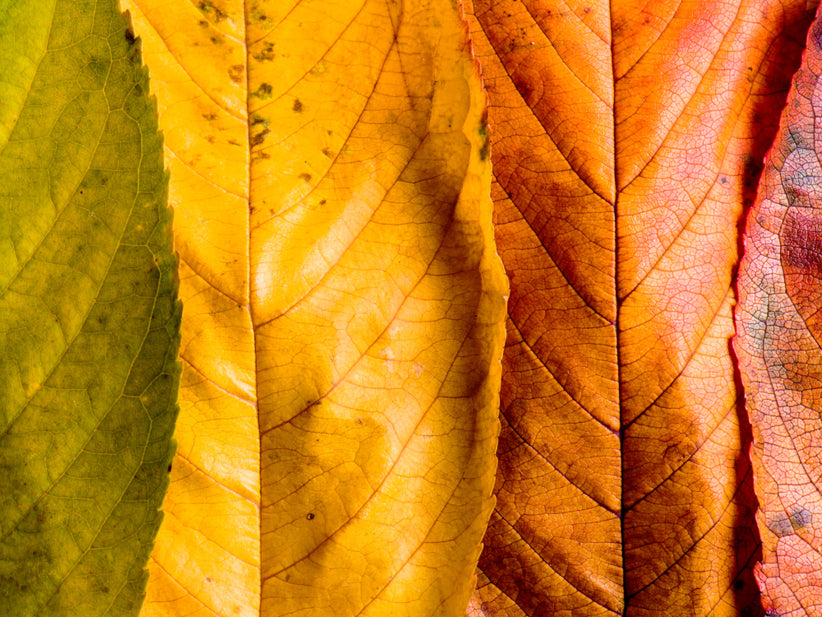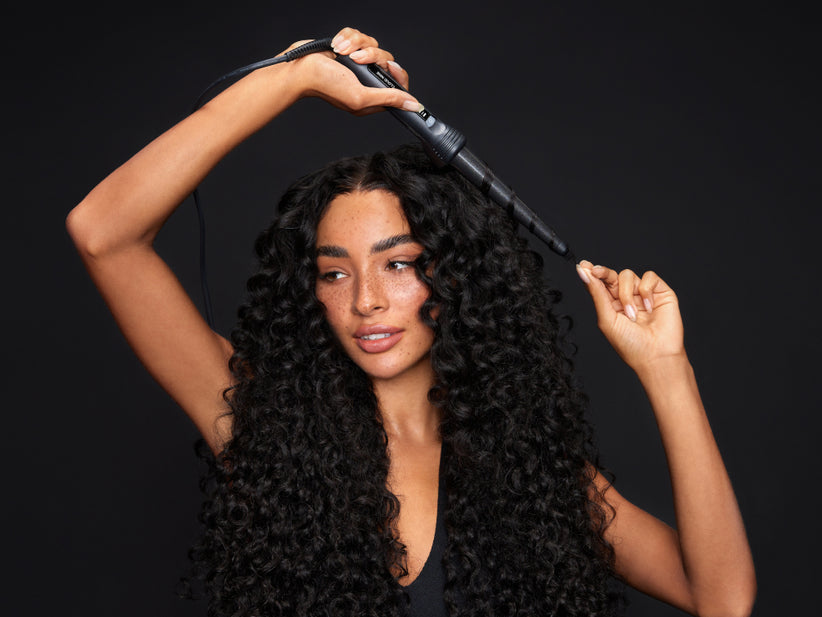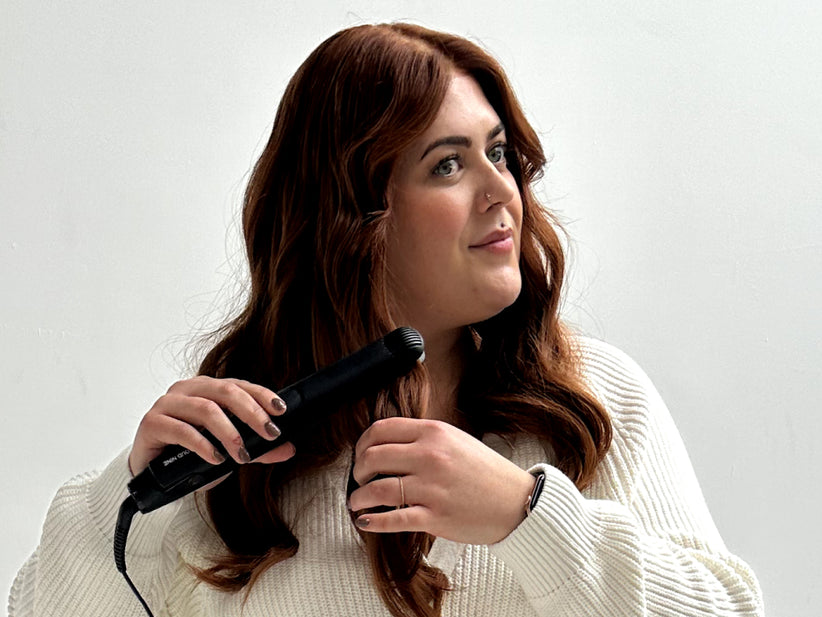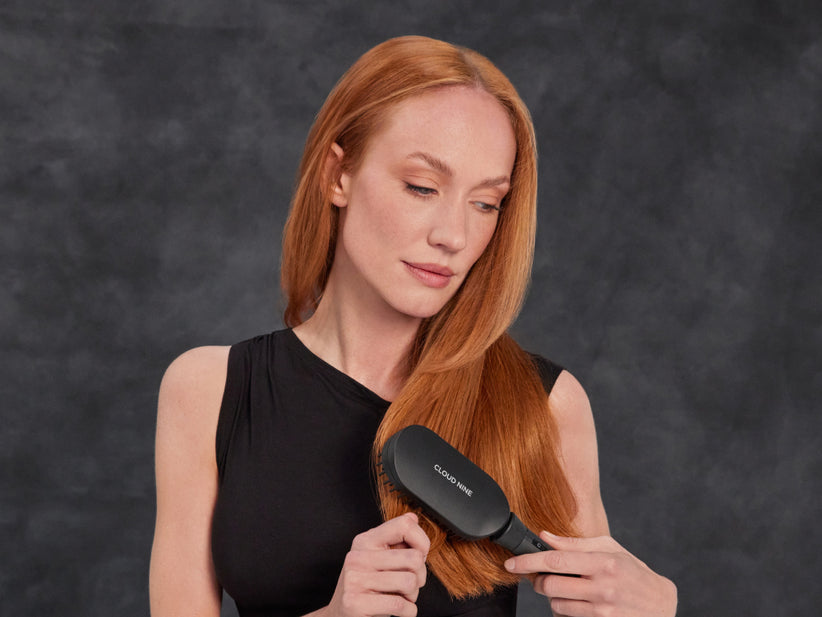Ever wondered if there's more to those heat settings on your straighteners than just an ON switch? When it comes to nailing your look, the secret is all in the temperature. In this guide, we're giving you the lowdown on why different temperatures matter and how to decode the heat game with finesse. So, buckle up, because we're about to embark on a journey that leads straight to hair perfection – one temperature tweak at a time.
What heat temperature should I straighten my hair at?
The short answer is: hair that’s thick and coarse requires a higher temperature to straighten out, while you should use low heat on finer strands to prevent damage and breakage.
However, your hair is as unique as your DNA. A range of variables – from your hair type and colour to the kinds of treatments, dyes, and bleaches you’ve applied – impacts how your hair responds to different temperatures and heat styling techniques.
Use the CLOUD NINE Temperature Calculator to achieve healthy and effective heat styling. It takes into account factors from your hair’s curl pattern to its level of chemical exposure – ultimately providing you with the perfect heat setting for your hair straighteners.
WHY DOES STYLING TOOL TEMPERATURE MATTER?
The heat setting on styling tools like hair straighteners is crucial for several reasons:
- Hair Type and Texture. Hair types are like snowflakes – no two are the same. Fine or damaged hair? Think lower temperatures. Got a thick lion's mane? Crank it up a bit. You can find the perfect temperature setting for your hair by using the CLOUD NINE Temperature Calculator.
- Preventing Heat Damage. Too much heat is like your hair's worst enemy. It messes with the cuticle – causing dryness, splits, and breakage. Find the sweet spot to avoid the drama.
- Styling Effectiveness. The right temperature equals the right style. Too low might not do the trick, while too high might result in damage.
- Colour-Treated Hair. If your hair's rocking a colour, go easy on the heat. Lower settings keep that vibrant look without the premature fade.
- Scalp Health. Hot temperatures can turn your scalp into a desert. Keep things cool to style without the discomfort.
WHAT IS A GOOD TEMPERATURE TO STRAIGHTEN NATURAL HAIR?
There is no one-size-fits-all recommended temperature for straightening natural hair. While it might not be chemically treated, dyed or bleached, natural hair still varies in thickness, colour, and texture from person to person.
As with all hair types, starting at a low temperature and working your way up to the heat that’s best for you is a safe way to avoid unnecessary damage. Use the CLOUD NINE Temperature Calculator for a more accurate starting point.
WHAT IS A GOOD TEMPERATURE TO STRAIGHTEN CURLY HAIR?
Generally, curly hair should be straightened at a temperature between 110°C and 190°C depending on its colour and chemical exposure. Curly hair varies in thickness, but it can often take a little extra heat to straighten out tight curl patterns. We recommend starting cautiously on the lowest heat and turning up the temperature as required, while using a heat protectant.
Try the CLOUD NINE Temperature Calculator to learn the best heat for your curls.
WHAT IS A GOOD TEMPERATURE TO STRAIGHTEN DYED OR BLEACHED HAIR?
Dyed hair (either coloured or bleached) should be straightened between 110°C and 150°C. Chemical exposure through colouring, bleaching, perming, or chemically straightening hair, opens the hair cuticle – leaving your strands more vulnerable to damage at high heat. As a rule, keep the temperature low to protect your hair and keep your colour looking its best.
Use the CLOUD NINE Temperature Calculator to learn more about your hair type and find the perfect heat for your chemically treated hair.
WHAT TEMPERATURES DO CLOUD NINE STRAIGHTENERS HEAT TO?
Every CLOUD NINE hair straightener model comes with its own temperature range and controls. Some also come with Revive Mode – designed to break the cycle of hair breakage with Axial Vibration™ technology – which pre-sets the styling temperature to 150°C. When set to Revive Mode, the straightener plates vibrate at maximum frequency to feed hair between them with minimum friction.
Check out the product info below for a guide to what temperatures CLOUD NINE hair straighteners can reach.

DO I NEED TO USE HEAT PROTECTANT?
Using a heat protectant is like giving your hair a superhero shield before using straighteners.
Benefits include reduced heat damage by creating a barrier, preserving moisture to prevent dryness, and enhancing styling results.
Heat protectant acts as a bodyguard against heat damage, locks in moisture, ensures smooth styling, protects colour vibrancy, enhances shine, promotes long-term hair health, reduces tangles, and is versatile for heat-free styles.
Top tip: apply evenly, focus on ends, and follow usage instructions for optimal protection. It's your go-to move against damage from dryers, curling irons, and straighteners, making hair healthier and styling drama-free.
IS MY HAIR HEAT DAMAGED ALREADY?
Hair damage shows in various ways. Early recognition is key to prevention.
Common signs include: split ends, dryness, lack of shine, tangled and unmanageable hair, excessive breakage, changes in texture, splitting during styling, scalp issues, colour changes in treated hair, and reduced elasticity.
Overusing styling products can contribute to damage. To address and prevent further damage, consider trimming ends, deep conditioning, and adopting a healthy hair routine. Consult a professional for personalised advice based on your specific needs.
WHY IS MY HAIR FRIZZY?
Frizzy hair is a common concern with various contributing factors:
- Dry and moisture-lacking hair is prone to frizz, influenced by exposure to harsh weather, frequent heat styling, or the use of oil-stripping hair care products.
- Humidity plays a major role, causing the hair cuticle to absorb moisture, leading to a rough appearance, especially for those with curly or wavy hair.
- Excessive heat styling, chemical treatments, or harsh brushing, allows moisture entry, causing frizz.
- Overwashing or using harsh shampoos can strip natural oils, promoting dryness and frizz. Incorrect products, lacking conditioning, and heat styling without protection contribute to frizz.
- Chemical treatments, hard water, and genetic factors also influence frizz.
To manage frizz, focus on moisture retention, use appropriate styling products, protect hair from heat, and avoid excessive manipulation. Experiment with different products and techniques based on your hair type and preferences.
HOW DO YOU FIX HEAT-DAMAGED HAIR?
Reviving heat-damaged hair is all about smart care tweaks:
- First up, cut back those damaged ends with a trim every 6-8 weeks or so.
- Dive into deep conditioning weekly – check out our Magical Remedy.
- Go low and slow with heat styling by using a heat protectant.
- Use a sulfate-free, hydrating shampoo, washing 2-3 times a week.
- End your shower with a cool rinse for a frizz-free finish.
- Protein treatments (think keratin) and leave-in conditioners are your buddies.
- Swap to silk pillowcases, load up on hair-loving foods, and consider consulting with a professional. Stick to this routine, and watch your hair bounce back in style.
HOW TO CARE FOR HEAT STYLED HAIR
Maintaining heat-styled hair is vital for health and looks. Here are 14 quick tips for cared-for heat-exposed hair:
- Use a heat protectant before styling to shield from high temperatures
- Opt for the right heat setting based on your hair type (the CLOUD NINE Temperature Calculator will help)
- Reduce heat styling, embrace heat-free styles, or mix in some no-heat days
- Choose quality tools with adjustable settings to avoid damage
- Deep condition regularly with products such as Magical Remedy and others containing ingredients such as argan oil or shea butter
- Boost hair strength with protein treatments, but avoid excessive use
- Schedule trims to eliminate split ends and maintain your hairstyle
- Smooth out knots gently with a wide-tooth comb, starting from the tips
- Use sulfate-free shampoos to preserve natural oils
- Finish showers with a cool rinse to seal the cuticle and lock in moisture
- Choose protective hairstyles like braids, buns, or updos
- Load up on vitamins and minerals for a healthy mane
- Shield hair from UV rays with hats or UV-blocking products
- Keep the scalp healthy for optimal hair growth with a gentle shampoo and scalp massage
YOUR HAIR MAY ALSO LIKE
Heat isn’t the only factor in maintaining healthy hair. Protect and enhance your tresses with our other products.


.jpg?v=1724142040589)


.jpg?v=1724140515432)
